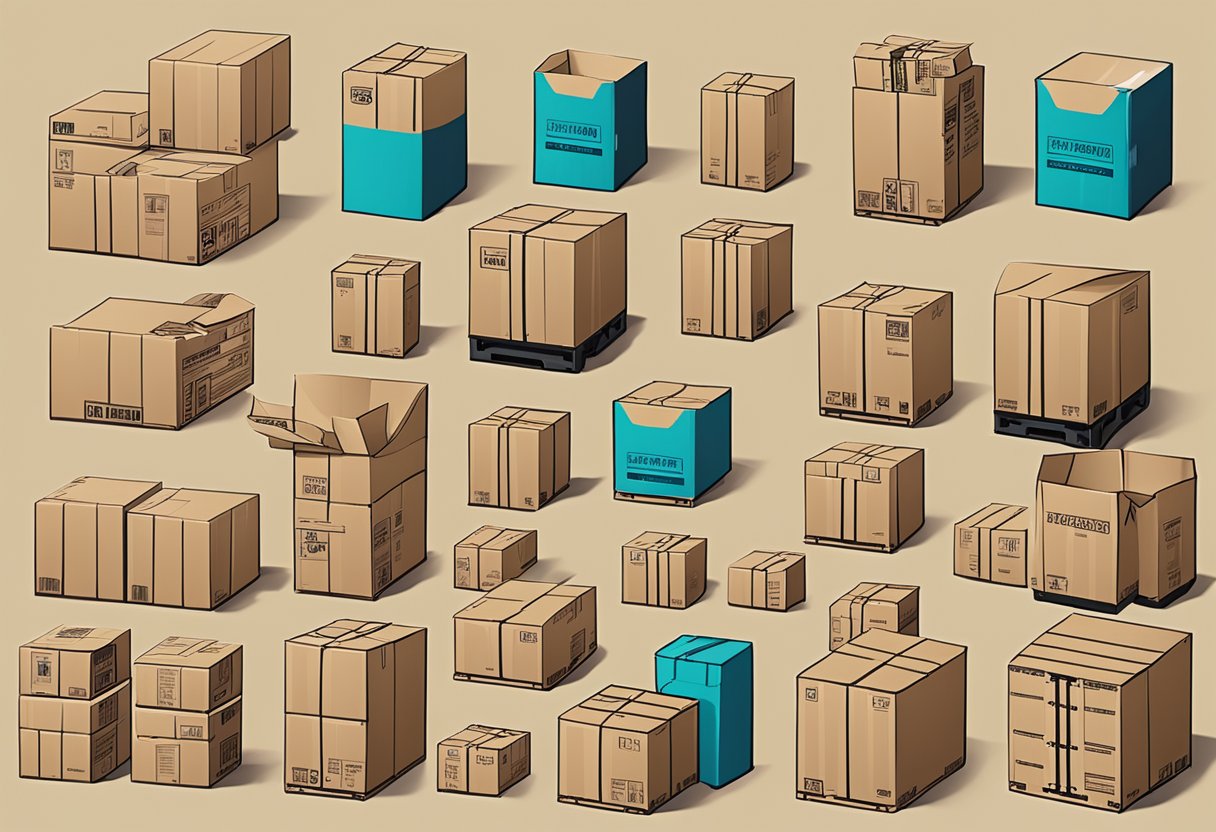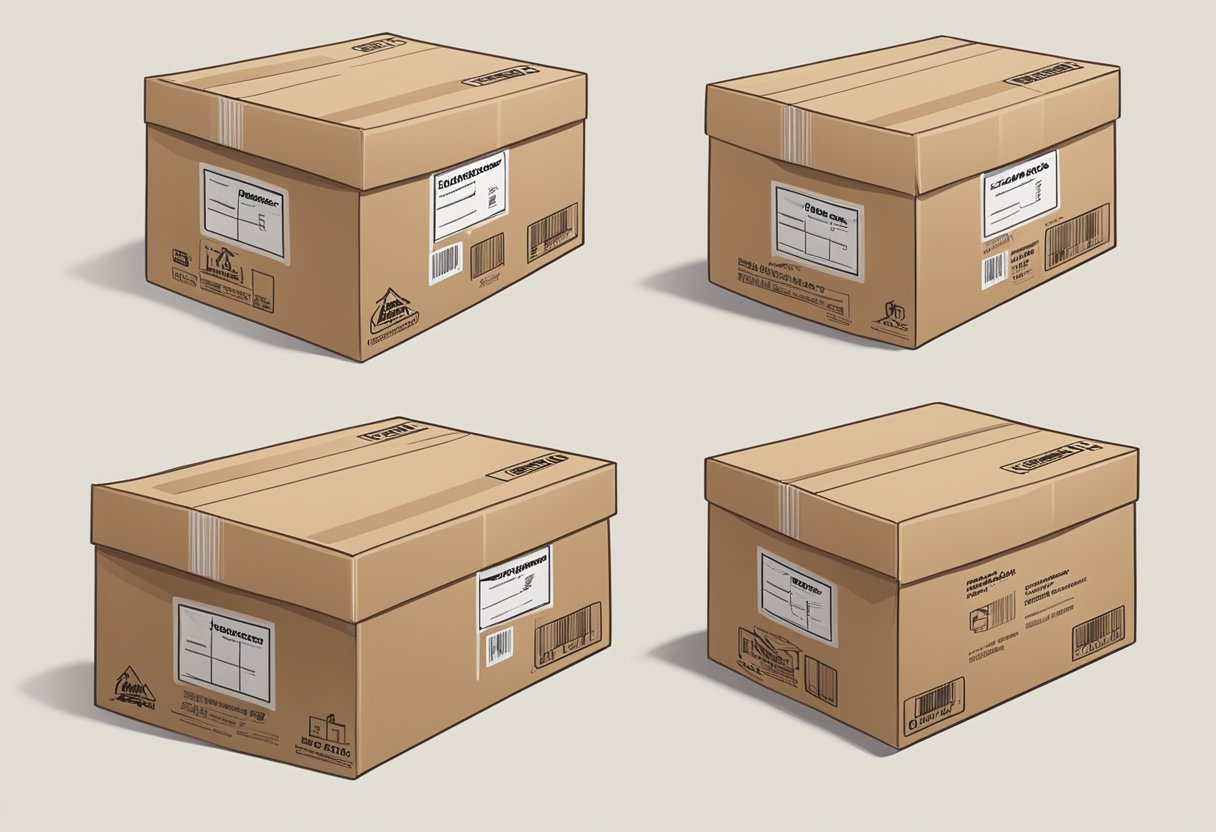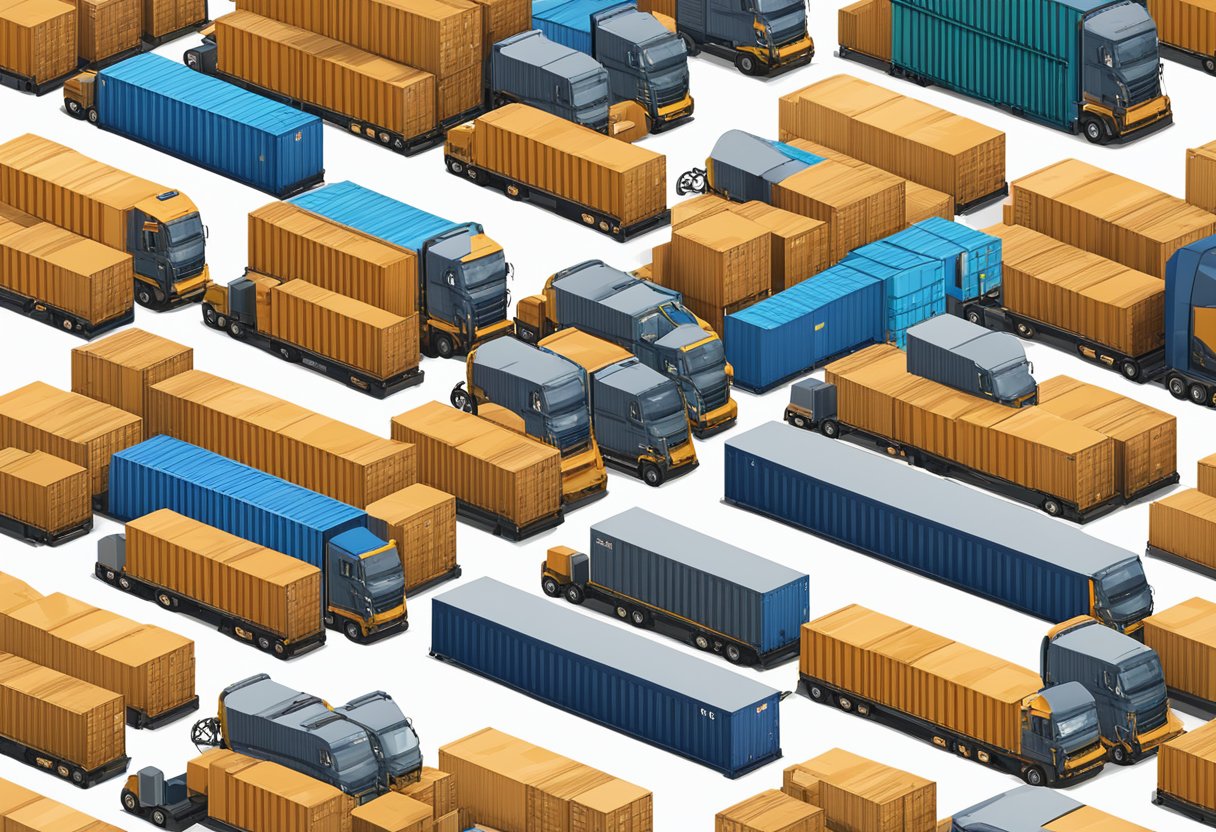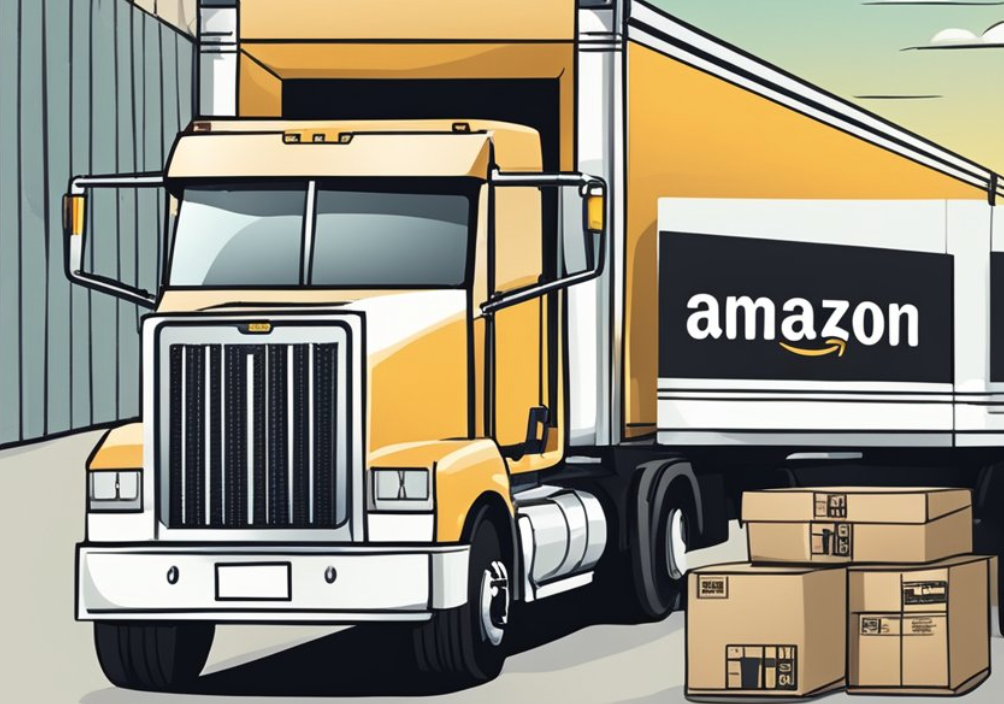Shipping to Amazon FBA can be a daunting task for new sellers. However, it is an essential process that can help sellers grow their business and reach a wider audience. Fulfillment by Amazon (FBA) is a program that allows sellers to outsource their fulfillment processes to Amazon. With FBA, sellers can store their products in Amazon fulfillment centers, and when customers place orders, Amazon can pack, ship, and provide customer service for the FBA items.
To get started with shipping to Amazon FBA, sellers need to first create an Amazon seller account. Once they have done so, they can enroll their inventory in FBA and send their products to Amazon’s fulfillment centers. There are several ways to create a shipment to Amazon FBA, including using Amazon’s online tools, using a third-party service, or working with a logistics provider. It is important to choose a shipping method that is cost-effective and efficient for the seller’s business.
Shipping to Amazon FBA can be a complex process, but it is one that can greatly benefit sellers. By outsourcing their fulfillment processes to Amazon, sellers can focus on growing their business and reaching new customers. With the right tools and strategies, shipping to Amazon FBA can be a seamless and profitable experience for sellers of all sizes.
Understanding Amazon FBA
Fulfillment by Amazon (FBA) is a service that allows sellers to store their products in Amazon’s fulfillment centers. This means that when a customer places an order, Amazon employees will pick, pack, and ship the product on the seller’s behalf. FBA is a popular choice for many Amazon sellers as it allows them to focus on other aspects of their ecommerce business, such as marketing and sourcing new products.
To use FBA, sellers need to create an Amazon seller account and enroll in the FBA program. Once enrolled, they can send their products to Amazon’s fulfillment centers, where they will be stored until they are sold. Amazon charges fees for this service, which include storage fees, fulfillment fees, and referral fees.
One of the benefits of using FBA is that Amazon takes care of the shipping and handling of the products. This means that sellers do not need to worry about packing and shipping their products themselves. Additionally, products fulfilled by Amazon are eligible for Amazon Prime and other Amazon programs, which can increase their visibility and sales.
To use FBA, sellers need to ensure that their products meet Amazon’s packaging and shipping requirements. These requirements vary depending on the product type and can include things like the size and weight of the product, the type of packaging used, and the inclusion of an Amazon barcode.
Sellers can manage their FBA inventory and shipments through Amazon Seller Central, which is Amazon’s online portal for sellers. From Seller Central, sellers can create shipments, track inventory levels, and view their sales and fees.
Overall, FBA can be a great option for Amazon sellers looking to streamline their fulfillment process and improve their customer experience. However, it is important for sellers to understand the fees and requirements associated with the program before enrolling.
Setting Up Your Seller Account
Before you can start shipping your products to Amazon FBA, you need to set up your seller account. This can be done through Amazon Seller Central, which is Amazon’s web interface for managing your selling account.
To create a seller account, you will need to provide basic information about your business, such as your company name, address, and tax identification number. You will also need to provide a valid credit card to pay for any fees associated with selling on Amazon.
Once your seller account is set up, you can start creating product listings for the items you want to sell on Amazon. To do this, you will need to provide detailed information about each product, including the product title, description, images, and pricing information.
It’s important to note that Amazon charges a referral fee for each item sold on their marketplace. This fee varies depending on the category of the product and can range from 6% to 45% of the item’s sale price. Be sure to review Amazon’s terms and conditions carefully to understand the fees associated with selling on their platform.
Overall, setting up your seller account is a straightforward process that can be completed in just a few steps. By following Amazon’s guidelines and providing accurate information about your business and products, you can start shipping to Amazon FBA and reach millions of potential customers around the world.
Inventory Management in FBA
Inventory management is a critical aspect of running a successful business on Amazon. With FBA, sellers can store their products in Amazon’s fulfillment centers, and Amazon will handle the packing, shipping, and customer service for those products. This can save sellers time and money, but it also means that they need to manage their inventory carefully to avoid stockouts, overstocks, and other issues.
FBA sellers can manage all inventory through their Seller Central account. They can view their inventory levels and restock inventory as needed to ensure that they have enough stock to meet demand. Amazon also provides tools to help sellers manage their inventory, including the Inventory Dashboard, which provides a real-time view of inventory levels, and the Restock Inventory tool, which helps sellers determine when to restock their inventory.
FBA sellers should also be aware of the Aged Inventory Surcharges that Amazon imposes on items that have been stored in Amazon’s fulfillment centers for more than 365 days. To avoid these surcharges, sellers should monitor their inventory levels and sell through their inventory before it becomes too old.
When shipping inventory to Amazon’s fulfillment network, FBA sellers should follow the steps outlined by Amazon. This includes creating a listing and converting it to FBA, creating an inbound shipment plan, preparing the items for shipping, creating an inbound shipment, and using an Amazon-partnered carrier for inbound shipments if possible.
In summary, FBA inventory management is a crucial part of running a successful business on Amazon. Sellers should monitor their inventory levels, restock inventory as needed, and sell through their inventory before it becomes too old to avoid Aged Inventory Surcharges. Following Amazon’s guidelines for shipping inventory to their fulfillment network can also help ensure a smooth and efficient process.
Prepping and Packing for Shipment
When shipping products to Amazon FBA, prepping and packing the items correctly is crucial to ensure that they arrive safely and in good condition. Here are some tips to help sellers prepare and pack their products for shipment.
Prepping
Before packing the products, it is important to ensure that they are properly prepped. This includes removing any price tags, stickers, or labels that are not related to the product or Amazon’s labeling requirements. Sellers should also ensure that their products are clean and free of any dirt or debris.
Packing Details
When packing the products, sellers should use high-quality packaging materials to ensure that the products are protected during transit. Bubble wrap, packing peanuts, and poly bags are all excellent options for protecting individual units. It is important to avoid using pallet-sized boxes or poor-quality shipping boxes.
Sellers should also ensure that they pack single-SKU and mixed-SKU boxes before creating shipments and update quantities as they pack. This helps to avoid any confusion or mistakes when confirming shipment destinations.
Labeling
Proper labeling is also crucial when shipping products to Amazon FBA. Sellers should ensure that they follow Amazon’s labeling requirements and use the correct shipment label. This label should be placed on the outside of the shipping box and must include the shipment ID, the destination address, and the return address.
Shipping Box
Sellers should use suitable boxes and packing materials of high quality when shipping their products to Amazon FBA. The shipping box should be sturdy and able to withstand the rigors of shipping. It is also important to ensure that the shipping box is not too large or too small for the products being shipped.
In summary, prepping and packing products correctly is essential when shipping to Amazon FBA. By following these tips, sellers can ensure that their products arrive safely and in good condition.
Creating and Managing Your Shipping Plan

When it comes to shipping to Amazon FBA, creating and managing a shipping plan is an essential part of the process. A shipping plan is a set of instructions that tells Amazon how to receive and store your inventory. Here’s what you need to know about creating and managing your shipping plan:
Creating a Shipping Plan
To create a new shipping plan, log in to your Amazon Seller Central account and navigate to the “Send/Replenish Inventory” page. From here, you can add products to your shipment, set the quantity, and choose the shipping mode. You’ll also need to select your ship date and lead time, which is the amount of time it takes to get your products to Amazon’s fulfillment center.
When creating your shipping plan, you’ll have the option to either create a new plan or add to an existing one. If you’re shipping multiple products, it’s usually best to create a new plan for each product to ensure that everything is organized and accounted for.
Managing Your Shipping Plan
Once your shipping plan is created, you can manage it from the “Manage FBA Shipments” page. Here, you can view your shipment status, track your packages, and make any necessary changes to your plan.
One important thing to note is that Amazon requires you to use their Shipment Creation Workflow (SCW) to create and manage your shipments. This workflow ensures that your shipments meet Amazon’s requirements and helps prevent errors or delays.
Sending Your Inventory to Amazon
Once your shipping plan is complete, it’s time to send your inventory to Amazon’s fulfillment center. You can do this using Amazon’s Send to Amazon (STA) workflow, which guides you through the process of preparing and labeling your products.
When sending your inventory to Amazon, it’s important to follow their guidelines for packaging and labeling. This includes using the correct box sizes, affixing the correct labels, and ensuring that your products are properly protected during transit.
In conclusion, creating and managing a shipping plan is a crucial part of the process when shipping to Amazon FBA. By following Amazon’s guidelines and using their workflows, you can ensure that your shipments are organized, efficient, and error-free.
Labeling and Box Content Information

Labeling and box content information are essential components of the Amazon FBA shipping process. Proper labeling and box content information ensure that Amazon can track and manage your inventory effectively. This section will cover the different types of labels required for FBA shipments and the information that should be included in box content information.
Labels
There are several types of labels required for FBA shipments. The following table outlines the different types of labels and their specifications:
| Label Type |
Specifications |
| FBA Box Label |
Each box must have a unique FBA Box ID label. The label should be 4″ x 6″ and include the FBA Box ID, the shipment ID, and the total number of boxes in the shipment. |
| Shipping Label |
Each box must have a shipping label that includes the recipient’s name and address, the sender’s name and address, and the carrier’s tracking number. |
| Barcode Label |
Each product must have a unique barcode label that includes the Amazon barcode (FNSKU) and the product’s condition (New or Used). |
You can either print and label the barcodes on each unit yourself, have your supplier print the barcode on your product packaging, or you can have Amazon label your products for a fee. It is important to ensure that all labels are printed clearly and are affixed securely to the appropriate location on the box or product.
Box Content Information
Box content information is a detailed list of the products included in each box. The following information should be included in the box content information:
- Product name
- Product description
- Quantity
- Condition (New or Used)
- FNSKU (Amazon barcode)
- Unit price
It is important to ensure that the box content information is accurate and matches the products included in the box. Amazon may reject shipments that do not have accurate box content information or that have missing or damaged products.
In conclusion, proper labeling and box content information are critical components of the Amazon FBA shipping process. By following the labeling and box content information requirements, sellers can ensure that their inventory is managed effectively and that their shipments are accepted by Amazon.
Choosing Your Shipping Carrier

When it comes to shipping your products to Amazon FBA, choosing the right shipping carrier is essential. There are several factors to consider when selecting a carrier, including cost, reliability, and speed of delivery.
One popular option for shipping to Amazon FBA is UPS. UPS offers a range of services, including ground, air, and international shipping. They also offer a variety of delivery options, such as next day air and two-day air. Additionally, UPS provides tracking information and insurance coverage for your shipments.
Another popular choice is FedEx. FedEx offers similar services to UPS, including ground, air, and international shipping. They also offer a range of delivery options, including same-day, overnight, and two-day delivery. FedEx also provides tracking information and insurance coverage for your shipments.
Amazon Global Logistics is another option to consider. This service is designed specifically for sellers shipping products to Amazon FBA. Amazon Global Logistics handles everything from pickup to delivery, and they offer competitive rates and fast delivery times.
If you are shipping products internationally, ocean freight may be a cost-effective option. While it may take longer than air freight, it can save you money on shipping costs. However, it is important to work with a reputable freight forwarder to ensure that your shipments are handled properly.
Ultimately, the choice of shipping carrier will depend on your specific needs and budget. It is important to do your research and compare rates and services before making a decision. By choosing the right shipping carrier, you can ensure that your products are delivered to Amazon FBA quickly and efficiently.
Understanding FBA Shipping Costs
Amazon FBA (Fulfillment by Amazon) is a popular service that allows sellers to store their products in Amazon’s fulfillment centers. This service is a convenient way for sellers to ship their products to customers without having to handle the shipping process themselves. However, it is important for sellers to understand the costs associated with FBA shipping.
FBA Shipping Costs
FBA shipping costs are the fees charged by Amazon to ship products to customers. These fees are based on the weight and dimensions of the product, as well as the shipping destination. It is important to note that FBA shipping costs are not fixed and can vary depending on the product and shipping location.
FBA Costs
In addition to FBA shipping costs, there are other costs associated with using FBA. These costs include FBA storage fees, FBA order fulfillment fees, and FBA long-term storage fees. It is important for sellers to understand these costs and factor them into their pricing strategy.
Discounts
Amazon offers discounts on FBA shipping costs for certain products. For example, sellers can receive discounts on shipping costs for products that are lightweight or small in size. Additionally, Amazon offers discounted shipping rates for sellers who use their own shipping labels and ship products themselves.
Charges
It is important for sellers to understand the charges associated with FBA shipping. These charges include the cost of shipping the product to the fulfillment center, the cost of storing the product in the fulfillment center, and the cost of shipping the product to the customer. Sellers should factor these charges into their pricing strategy to ensure that they are making a profit.
In conclusion, understanding FBA shipping costs is crucial for sellers who use Amazon’s FBA service. By factoring in these costs, sellers can ensure that they are pricing their products correctly and making a profit.
Amazon Fulfillment Centers and Warehouses
Amazon operates a vast network of fulfillment centers and warehouses across the globe to support its FBA program. These facilities are strategically located near major population centers to ensure fast and efficient delivery of products to customers.
Amazon’s fulfillment centers are massive warehouses that house millions of products from thousands of sellers. These facilities are equipped with state-of-the-art technology and robotics to streamline the order fulfillment process. When a customer places an order, the nearest fulfillment center will pick, pack, and ship the product on behalf of the seller.
As of 2021, Amazon has over 75 fulfillment centers in North America alone, with more slated to open in the coming years. In addition to its domestic network, Amazon also operates fulfillment centers in Europe, Asia, and other regions of the world.
Amazon’s warehouses are another critical component of its FBA program. These facilities are used to store products that are awaiting shipment to a fulfillment center or directly to customers. Amazon’s warehouses are typically located near major transportation hubs, such as airports and seaports, to facilitate the movement of goods.
In addition to its own facilities, Amazon also partners with third-party logistics providers to offer additional storage and fulfillment options to sellers. These providers operate their own warehouses and fulfillment centers, which can be used in conjunction with Amazon’s facilities to provide a seamless end-to-end solution for sellers.
Overall, Amazon’s vast network of fulfillment centers and warehouses is a critical component of its FBA program. By leveraging this infrastructure, sellers can tap into Amazon’s global reach and offer customers fast and efficient delivery options.
Logistics and Supply Chain
Logistics and supply chain management are critical components of successful shipping to Amazon FBA. As an importer of record, the seller is responsible for ensuring that their products are delivered to Amazon’s fulfillment centers in a timely and cost-effective manner.
Amazon offers its own supply chain services, known as Supply Chain by Amazon, that provide end-to-end solutions for sellers. This service includes automated supply chain management, faster and more reliable shipping, and lower costs. It also includes origin services, ocean freight shipping, customs clearance, and pick-up services at key manufacturing hubs in China, the US, Europe, and the UK.
However, sellers can also use third-party logistics (3PL) providers to manage their supply chain and logistics needs. These providers offer a range of services, including freight forwarding, customs clearance, and warehousing. By partnering with a 3PL provider, sellers can ensure that their products are delivered to Amazon FBA on time and at a lower cost.
When shipping to Amazon FBA, it is important to consider the logistics and supply chain requirements of each country. For example, when shipping from China, sellers must comply with Chinese export regulations and ensure that their products are properly labeled and packaged. They must also consider the shipping method and transit time, as well as any customs duties and taxes that may apply.
In the US, sellers must comply with US customs regulations and ensure that their products meet all safety and labeling requirements. They must also consider the shipping method and transit time, as well as any tariffs or taxes that may apply.
In Europe and the UK, sellers must comply with EU and UK customs regulations and ensure that their products meet all safety and labeling requirements. They must also consider the shipping method and transit time, as well as any VAT or customs duties that may apply.
Overall, successful shipping to Amazon FBA requires careful planning and management of the logistics and supply chain. By partnering with a 3PL provider or using Amazon’s Supply Chain services, sellers can ensure that their products are delivered to Amazon FBA on time and at a lower cost.
Dealing with Returns and Customer Service
Returns are an inevitable part of doing business, and Amazon FBA is no exception. When a customer requests a return, Amazon immediately takes the return funds from the seller’s upcoming disbursement and usually gives the customer a shipping label to return the item to the proper warehouse. Customers are on the honor system to return the item they no longer want within 45 days.
If the product never makes it to the unsellable inventory, Amazon will reimburse the sales price of the item. However, if the item is returned in unsellable condition, the seller may be responsible for disposing of the item or paying for it to be returned to them. To minimize the loss, sellers can try to resell the item on another marketplace or liquidation site.
To handle returns effectively, it’s important to have a clear and easy-to-understand return policy. This policy should be prominently displayed on the product listing and the seller’s storefront. The policy should include information on how to request a return, what items are eligible for return, and any restocking fees or return shipping costs that may apply.
Customer service is also an important aspect of selling on Amazon FBA. Sellers should be responsive to customer inquiries and complaints, and strive to resolve any issues quickly and professionally. This can help build a positive reputation and increase customer loyalty.
To provide good customer service, sellers should monitor their messages and respond promptly to any inquiries or complaints. They should also be willing to offer refunds or replacements when appropriate, and work with customers to resolve any issues that arise.
Overall, dealing with returns and customer service can be challenging, but it’s an essential part of running a successful Amazon FBA business. By having clear policies and providing good customer service, sellers can minimize the impact of returns and build a loyal customer base.
Understanding Amazon Prime and FBA
Amazon Prime is a subscription service that offers free two-day shipping on eligible items, access to streaming of movies, TV shows, and music, and other benefits. Amazon FBA (Fulfillment by Amazon) is a service that allows sellers to outsource their order fulfillment process to Amazon. By using FBA, sellers can store their products in Amazon’s warehouses and Amazon will handle the picking, packing, and shipping of their products to customers.
One of the main benefits of using FBA is that sellers can offer their customers Prime shipping. Prime shipping is a feature of Amazon Prime that allows customers to receive their orders in two days or less. By using FBA, sellers can take advantage of Amazon’s extensive network of fulfillment centers, which allows for faster and more reliable shipping.
Another benefit of using FBA is that sellers can save time and money on their shipping and fulfillment processes. With FBA, sellers don’t have to worry about packing and shipping their products themselves, which can be time-consuming and costly. Instead, Amazon takes care of everything and charges a fee based on the size and weight of the product.
Overall, using FBA and offering Prime shipping can be a great way for sellers to increase their sales and improve their customer satisfaction. By taking advantage of Amazon’s vast resources and expertise, sellers can focus on growing their business and providing high-quality products to their customers.
Exploring Multi-Channel and Remote Fulfillment
Amazon Multi-Channel Fulfillment (MCF) is a service that allows sellers to outsource the fulfillment of their orders from off-Amazon channels. This includes their brand websites, other ecommerce marketplaces, and social media stores. MCF provides low-cost, reliable fulfillment for any of your ecommerce sales channels, as fast as one day. With MCF, sellers can grow their business with Prime-like delivery speeds and trusted fulfillment.
Remote Fulfillment with FBA is a program that lets sellers sell to customers in Canada, Mexico, and Brazil without sending inventory to those countries. When sellers enroll in the program and create offers on Amazon.ca, Amazon.com.mx, and Amazon.com.br, Fulfillment by Amazon (FBA) uses their inventory in US fulfillment centers to deliver customer orders across the border.
Sellers can use both MCF and FBA for order fulfillment, which increases their Amazon sales revenue. Nearly half of US Amazon sellers use FBA to pick, pack, and ship their Amazon.com orders. MCF provides a way for sellers to expand to other sales channels while still relying on Amazon’s trusted fulfillment network.
Sellers can determine if they and their products are eligible for Remote Fulfillment with FBA by checking the program’s requirements. They can also manage the program, per-sale, and import fees in their Seller Central account.
In summary, Amazon Multi-Channel Fulfillment and Remote Fulfillment with FBA provide sellers with low-cost, reliable fulfillment for their ecommerce sales channels. Sellers can use both services to increase their sales revenue and expand to other sales channels while still relying on Amazon’s trusted fulfillment network.
FBA Storage Fees and Seasonality
FBA storage fees are one of the costs associated with using Amazon’s FBA service. These fees are charged to sellers for storing their inventory in Amazon’s warehouses. The cost of storage fees varies depending on the size and weight of the product and the time of year.
Amazon charges two types of FBA storage fees: monthly storage fees and long-term storage fees. Monthly storage fees are charged based on the volume of inventory that a seller has stored in Amazon’s warehouse each month. Long-term storage fees are charged for inventory that has been stored in Amazon’s warehouse for more than 365 days.
The monthly storage fees for standard-size items are $0.75 per cubic foot from January to September and $2.40 per cubic foot from October to December. Oversize items are charged $0.48 per cubic foot from January to September and $1.20 per cubic foot from October to December.
Long-term storage fees are charged twice a year, on February 15th and August 15th. Inventory that has been stored in Amazon’s warehouse for more than 365 days is charged $6.90 per cubic foot or $0.15 per unit, whichever is greater.
Seasonality can have a significant impact on FBA storage fees. Amazon charges higher storage fees during the holiday season, from October to December. This is because demand for storage space is higher during this time of year, and Amazon needs to manage its warehouse space efficiently.
To avoid paying higher FBA storage fees during the holiday season, sellers should consider adjusting their inventory levels. They can do this by either reducing the amount of inventory they send to Amazon during this time or by removing slow-moving products from Amazon’s warehouse before the holiday season begins.
Overall, FBA storage fees are an important cost to consider when selling on Amazon. Sellers should be aware of the different types of storage fees and how they are calculated, as well as the impact that seasonality can have on these fees. By managing their inventory levels effectively and understanding the costs associated with FBA storage, sellers can optimize their profitability on Amazon.
Customs Clearance and Importing
When shipping products to Amazon FBA, customs clearance is a crucial step that must be completed before the products can be delivered to the fulfillment center. The importer of record is responsible for ensuring that all necessary documentation is provided to customs authorities and that any customs duties and taxes are paid.
To ensure a smooth customs clearance process, it is recommended to work with a reputable customs broker who has experience in importing goods into the country where the products will be delivered. The customs broker can help with preparing and submitting the necessary documentation, such as commercial invoices, packing lists, and bills of lading, and can also provide guidance on any specific customs regulations that may apply.
It is important to note that the importer of record is ultimately responsible for the accuracy and completeness of the customs documentation, and any errors or omissions can result in delays or additional costs. Therefore, it is essential to work closely with the customs broker and provide all necessary information in a timely and accurate manner.
In addition to customs clearance, the importer of record must also comply with any other import regulations and requirements, such as product safety standards and labeling requirements. Failure to comply with these regulations can result in fines, penalties, or even the seizure of the products by customs authorities.
Overall, customs clearance and importing can be a complex process, but working with a knowledgeable customs broker and ensuring compliance with all regulations can help ensure a smooth and successful shipment to Amazon FBA.
Maximizing Profits with FBA
Fulfillment by Amazon (FBA) is a powerful platform that allows sellers to increase their sales and profits while minimizing their workload. By using FBA, sellers can leverage Amazon’s vast network of fulfillment centers to store, pack, and ship their products to customers. This frees up the seller’s time and resources, allowing them to focus on growing their business.
One of the main benefits of using FBA is the ability to increase sales. FBA products are eligible for Amazon Prime, which means that they are eligible for free two-day shipping for Prime members. This can lead to increased visibility and sales for the seller, as many customers prefer to buy products that are eligible for Prime shipping.
Another way to maximize profits with FBA is to use the FBA revenue calculator. This tool allows sellers to calculate their potential profits based on their product’s price, shipping costs, and FBA fees. By using this tool, sellers can optimize their pricing and shipping costs to maximize their profits.
Sponsored products ads are another way to increase sales and profits with FBA. These ads allow sellers to promote their products on Amazon’s search results pages and product detail pages. By using sponsored products ads, sellers can increase their visibility and reach more customers, leading to increased sales and profits.
Wholesale and liquidations are two other ways to maximize profits with FBA. Wholesale allows sellers to purchase products in bulk at a discounted price, which they can then sell on Amazon for a profit. Liquidations, on the other hand, allow sellers to purchase products that have been returned or overstocked at a discounted price. These products can then be sold on Amazon for a profit.
In conclusion, FBA is a powerful platform that can help sellers increase their sales and profits while minimizing their workload. By using tools like the FBA revenue calculator and sponsored products ads, as well as taking advantage of wholesale and liquidations, sellers can maximize their profits and grow their business on Amazon.
Amazon’s Terms of Service and Guidelines
When shipping to Amazon FBA, it is important to adhere to Amazon’s Terms of Service (TOS) and Guidelines to avoid any penalties or suspension of your account. These policies are in place to ensure that products are safe for customers and meet Amazon’s standards for quality and customer experience.
The TOS cover a wide range of topics, including product listing requirements, prohibited items, and intellectual property rights. It is important to review these policies regularly to ensure that your products comply with Amazon’s requirements. Failure to comply with the TOS can result in the removal of your product listings, suspension of your account, or legal action.
Amazon’s Guidelines for shipping to FBA include requirements for packaging, labeling, and shipping. These guidelines are designed to ensure that products arrive at Amazon’s fulfillment centers in good condition and are processed quickly and efficiently. Failure to comply with these guidelines can result in additional fees or delays in processing your inventory.
Some of the key requirements for shipping to FBA include:
- Packaging: All products must be packaged securely and meet Amazon’s packaging requirements to prevent damage during shipping and handling.
- Labeling: Each unit must be labeled with a unique barcode that corresponds to the product listing in Amazon’s catalog.
- Shipping: All shipments to FBA must be accompanied by a shipment label that includes the shipment ID, the destination fulfillment center, and the number of boxes in the shipment.
In addition to these requirements, Amazon may also impose additional restrictions or requirements for certain categories of products, such as hazardous materials or oversized items. It is important to review these requirements carefully before shipping any products to FBA.
Overall, by following Amazon’s TOS and Guidelines, sellers can ensure that their products are safe for customers and meet Amazon’s standards for quality and customer experience.











